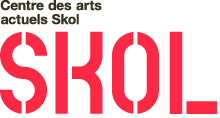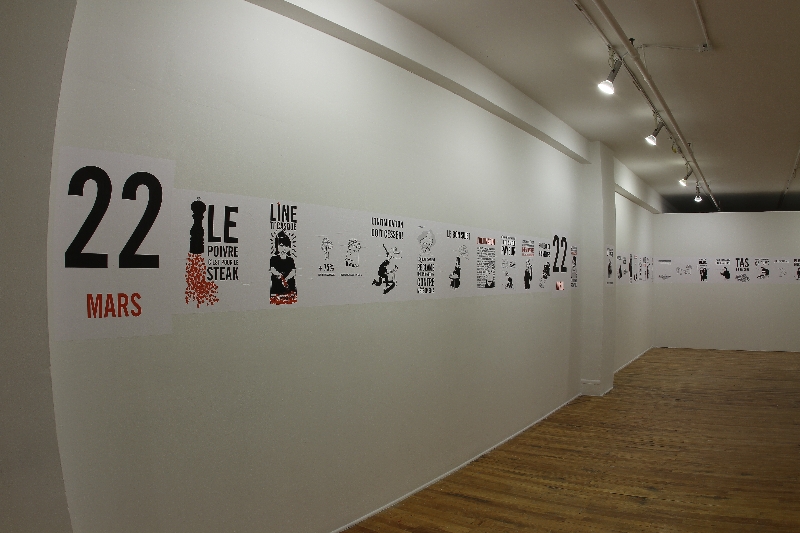Clément de Gaulejac: Motifs raisonnables
Posters
March 2 – April 6, 2013
Opening on Saturday March 2 5:30pm
Project Description
Between March and September 2012, Clément de Gaulejac produced several dozen posters in support of the student movement. After a strong and widespread dissemination campaign – during which they were posted online (L’eau tiède), reproduced as silkscreened prints (Diffuse et résiste collective studio), glued to walls or brandished during the massive spring rallies – the complete series of posters will be gathered at Skol. At the end of the exhibition, a special edition of these documents will be preserved in an archival fonds in Montréal.
Acknowledgements
Thank you to everyone who helped and supported me in the production and dissemination of these posters. They will recognize themselves behind one of these masks, under one of these banners: Diffuse et résiste; L’école voit rouge; The Mile-End Apac; Le Port de tête; the anonymous gluers; the tireless night walkers; Menue Fretin and my precious Sardine bench. Thanks also to the Casseroles; the Fausses nouvelles; the Bonhommes; the Panda; the Perforeuses; and in general to all the artists of circumstance who gave the Spring of 2012 the colour we all know. Finally, thank you to Skol and Artexte who have offered a final artistic destination to the traces of these political gestures.
Keys
1. Isabelle Stengers, Le défi de la production d’intelligence collective (Interviewed by Andrée Bergeron), Multitudes, no. 20, Spring 2005.
–› “Humour is very interesting […] because it guards against the toxins of all apocalyptic (nothing is possible beyond the final fight) or purist (keep your hands clean) perspectives, which are in the majority. It’s a minority art form, because one isn’t humourous in general, but more through direct contact with power.”
2. Pascal Convert, Des écoles d’art pourquoi et pour quoi faire ?, Art press 2, no. 22, summer 2011.
–› “Inventing the future today for an artist does not mean differentiating oneself by having commercial value in a globalized market, but allowing collective differentiation.”
3. Catherine Voyer-Léger, De la récupération (les produits dérivés du printemps québécois)
–› “That brings us to another concept, that of ‘recovery’, since we understand, between the lines, that what’s criticized is the recovery of this symbol for commercial gain. And it’s unquestionably true that there is a real danger there, but how do we analyze it?”
4. Robert Filliou, Enseigner et apprendre les arts vivants, Paris – Brussels, Lebeer Hossmann Archives, 1970, re-edited in 1998.
–› “Can I tell you something, Joseph? During the protests in May last year, I thought: ‘I know what these students want, they want to live like us.’ That’s what they want – all young people want to live like artists. That’s what they’re demanding, it’s what they’ve written on the walls.”





